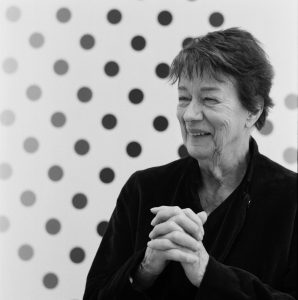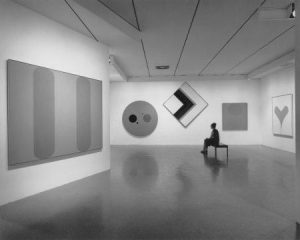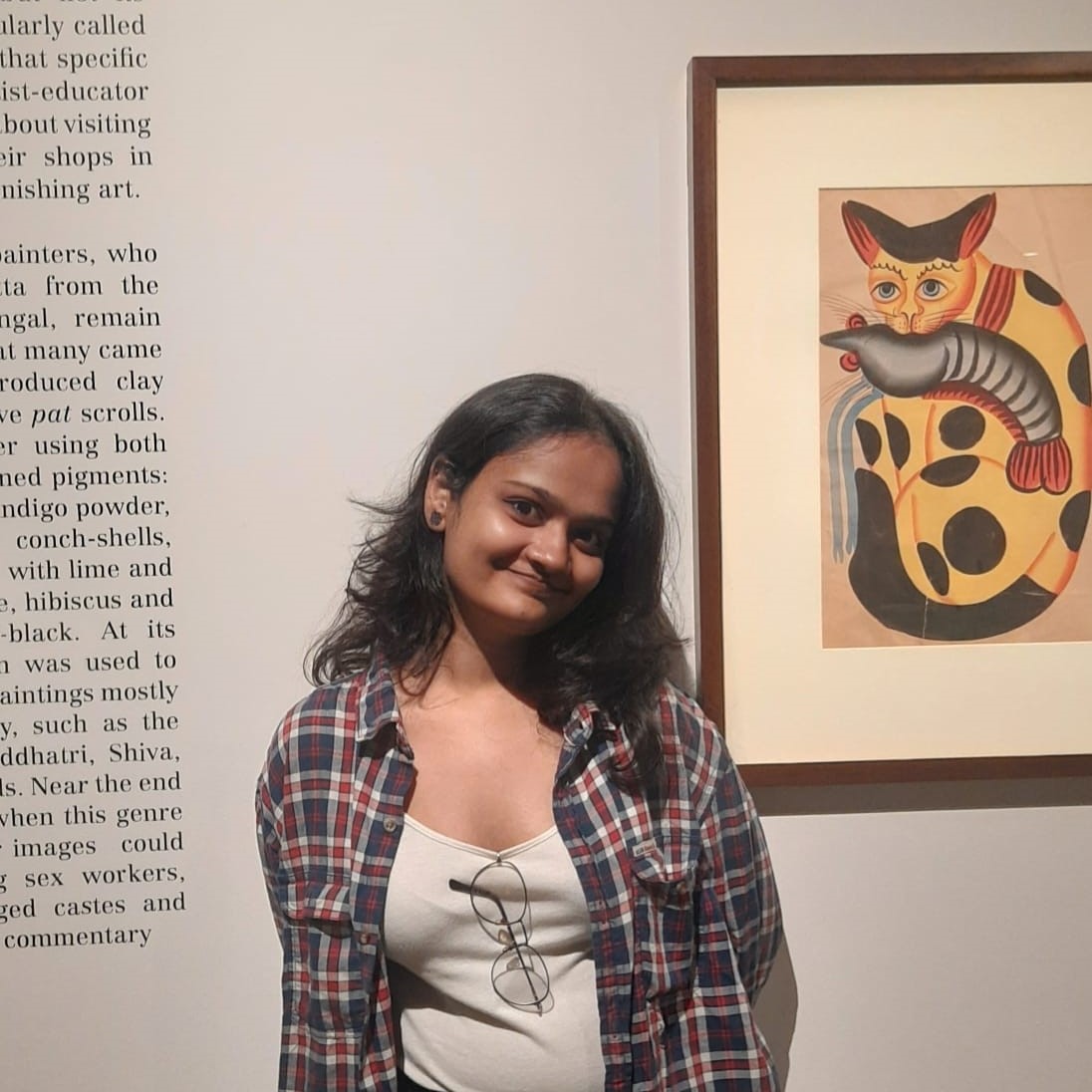Vaishnavi Srivastava
April 24th, ON THIS DAY
“If you can allow the colour to breathe, to occupy its own space, to play its own game in its unstable way, it’s wanton behaviour, so to speak. It is promiscuous like nothing.”
-Bridget Riley
Today is the legendary British painter and fashion designer Bridget Riley’s 92nd birthday. Riley, who was born in Norwood, London, in 1931, grew up in both Cornwall and Lincolnshire. She started her career as a semi-impressionist painter, specialising primarily in landscapes, after attending Goldsmiths’ College and the Royal College of Art. However, Riley’s art underwent a significant transition in the early 1960s. She started experimenting with optical art, a movement that tried to produce the appearance of movement or vibration through the use of geometric forms and patterns, after being inspired by Seurat’s pointillist style.

Courtesy: The New York Times
Riley didn’t start using colour in her Op art paintings until 1966; her earlier works were all black and white. The vivid colours, which were frequently paired in opposition, such as red and turquoise, gave her already captivating compositions a new dimension. Riley became one of the most renowned practitioners of Op art thanks to her works, such as Fall, 1963, which had a disorienting physical effect on the sight. Her paintings were of such significance that one of them was chosen for the cover of the exhibition catalogue for “The Responsive Eye” at the Museum of Modern Art in New York, which was the exhibition that popularised the term “Op art” in 1965.

Courtesy: MoMA
Riley became an international sensation primarily for her mastery of the Op art effects, particularly the minute variations in size, shape, or location of serialised units in an all-over pattern. In the 1960s, her elaborate, fashionable geometric abstractions paved the way for the Op Art movement. Riley painted some works in black and white early in her career, but she is most recognised for her works with vibrant colours. Her work is included in the collections of prestigious organisations including the Centre Pompidou, the Metropolitan Museum of Art, the Tate, and the Stedelijk Museum. She has had exhibitions in major cities all over the world, including London, New York, Los Angeles, Paris, Shanghai, Tokyo, and Hong Kong.
Beyond her work as a painter, Riley has made contributions to the field of art. Before joining the Loughborough School of Art, she spent two years teaching young children. In 1959, she started a basic design course abroad. She later started teaching at the Croydon School of Art and Hornsey School of Art. Her legacy continues to inspire artists and designers all across the world, and she had a tremendous impact on the generation of artists after her.

Courtesy: Artsy
Riley has received various accolades during her career as a result of her commitment to her profession. In 1963, she received a John Moores’ Liverpool Open Section prize in addition to the AICA Critics Prize. She took home the International Painting Prize from the Venice Biennale in 1968. A retrospective at the Hayward Gallery in London in 1971 and a solo exhibition at the Museum of Modern Art in New York in 1966 are just a couple of the group and solo shows that have included her work.
It is impossible to overestimate Bridget Riley’s significance as an Op art pioneer and her contributions to the fields of art and design. She now ranks among the greatest artists of the 20th century because of her commitment to her trade and creative painting style. We honour her accomplishments and the influence she has had on the art world on this day.

Vaishnavi Srivastava is a learning writer, a keen researcher and a literature enthusiast. She is a Sub-editor at Abir Pothi.





